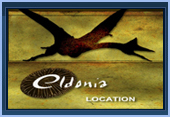화석명 : 바큐라이트 화석
학명 : Baculites compressus
지층 : Pierre Shale
원산지 : South Dakota, U.S.A
시대 : 중생대 후기백악기(Upper Cretaceous)
Size : 14cm * 4cm
Baculites ("walking stick rock") is a genus of extinct marine animals in the phylum Mollusca and class Cephalopoda. They are a nearly straight-shelled type of heteromorph ammonite that lived worldwide throughout the Late Cretaceous period. The genus was named by the French paleontologist Alcide Dessalines d'Orbigny in 1850.
Baculites grew up to two meters long and have long been thought to have lived in a vertical orientation with the head hanging straight down. Without a counterweight to the head at the apex of complete shells, researchers believed this was the only way the animal could have been oriented, so the animal could have swum with great agility vertically (but probably very poorly, if at all, horizontally). More recent research, notably by Gerd Westermann, has shown that at least some Baculites species were capable of an orientation closer to horizontal.
The shells of baculites grew in a coil during the early juvenile stage (up to about 1 cm in diameter), but as the animal matured, the shells grew long and straight. Adult baculites ranged in size from about seven centimeters (Baculites larsoni) up to two meters in length. From shell isotope studies, it is thought that baculites inhabited the middle part of the water column, not too close to either the bottom or surface of the ocean.
In some rock deposits baculite fossils are common, and they are thought to have lived in great shoals. However, they are not known to occur so densely as to be rock-forming, as do certain other extinct, straight-shelled cephalopods (e.g.,"orthocone orgies"). One notable feature about these animals is that it is believed the males were a third to a half the size of the females and had much lighter ribbing on the surface of the shell. As in all other ammonites, the shell consisted of a series of camerae, or body chambers, that contained gas which kept the animal buoyant. These chambers were connected together by a tiny tube called a siphuncle, which connected with the head of the animal. The animal itself lived in the last (i.e., largest) chamber. In this way, the baculite could regulate the gas levels in each chamber and control its buoyancy in the same manner as the Nautilus does today. The walls separating these chambers are called septa; the line along which each septum meets the outer shell is called the suture or suture line. Like all other ammonites, baculites have intricate suture patterns on their shells that can be used to identify different species. Baculite fossils are very brittle and almost always break. They are most commonly found broken in half or several pieces, usually along suture lines. Individual chambers found this way are sometimes referred to as "stone buffalos" (due to their shapes), though the Native-American attribution typically given as part of the story behind the name is likely apocryphal.
바큐라이트 화석(Baculites compressus)  (해외배송 가능상품)
(해외배송 가능상품)
| 상품명 | 바큐라이트 화석(Baculites compressus) |
|---|---|
| 제조사 | 미국(South Dakota) |
| 원산지 | 미국(U.S.A.) |
| 소비자가 | |
| 판매가 | 100,000원 |
| 상품코드 | P0000NQK |
| 수량 |   |
| 할인판매가 | 95,000원 (최대 5,000원 할인) |

(최소주문수량 1개 이상 / 최대주문수량 1개 이하)








































 수량을 선택해주세요.
수량을 선택해주세요.





































